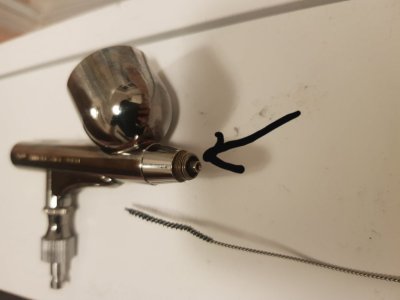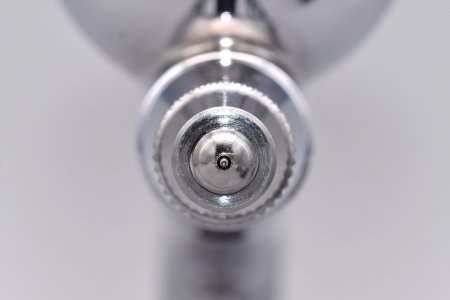My comments / thoughts here are not directly for the problem, but they have helped me and I would guess many others. First and foremost NEVER let paint dry up in any spray painting equipment...EVER. Second NEVER try to take it apart with dry paint in it, ALWAYS remove the air valve assembly ( the part where the air hose connects ) DO NOT soak that valve... soak everything else in cleaner for the paint that is dried up in it, for days or a week in some cases. Third when you take it apart after the soaking, push the needle out the front after taking the head off. It will save the needle seal from hard paint being pulled through it. Fifth NEVER let it dry out after removing from the soak tank, the paint will re-harden, some times harder that it was to start with. I've seen friends take their equipment out of a soak and then let it sit for a couple days and come back to another headache. Sixth NEVER use a metal wire brush to clean it, if the paint nozzle needs cleaned inside, use a tooth pick sharpened with a pocket knife or razor or use a special cleaning tool. Fifth when you finally think you have it cleaned, rinsed and blown dry, inspect it very carefully. Use a magnifying glass and a good light to make sure there is nothing stuck in an opening or threads, if a rubber seal is nicked /split /swelled up, it is junk...replace them all. I'm still a noobie here compared to many many others, but I have found that these simple guide lines have helped me and will probably help you too... Well I hope they do.
P.S. NEVER over tighten the paint nozzle when reassembling the airbrush, they strip out or break off in the body very easy, it only needs lightly snugged. ... very lightly !






